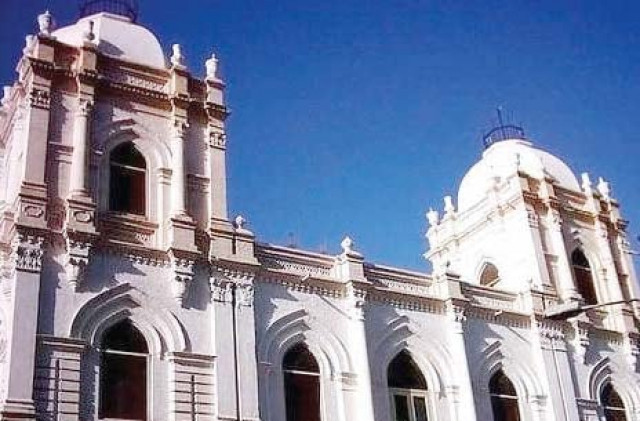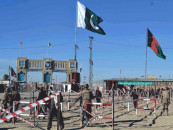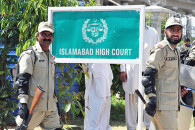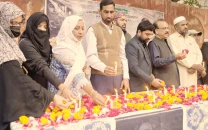Central library: An edifice of Bahawalpur’s identity
The well-stocked Central Library is counted among the most emblematic of the city’s monuments.

Central library: An edifice of Bahawalpur’s identity
The imposing architecture of Italian variety lends the building old world charm. The red-brick structure is, in fact, an edifice of Bahawalpur’s identity – a relic of its glorious culture.
Small wonder, then, the well-stocked Central Library is counted among the most emblematic of the city’s monuments.
The second biggest of Punjab, the Central Library is famous for its treasury of books. Aside from tomes on a whole array of subjects and thousands of documents, including rare manuscripts, of historical importance, it contains antiques such as parts of the Quran said to be scripted by Hazrat Imam Hussain (RA) about 1,400 years ago on a deer hide.
Long considered by bibliophiles as one of the prides of Bahawalpur, the library is now struggling for its upkeep, chiefly because funds have tapered off to a trickle.
The cash problem is manifesting itself in varied forms. The unique service of mobile library, for instance, which used to deliver books to readers and students at their places of convenience, has already closed.
Sources say the historic building is in a state of disrepair but funds provided for its maintenance are a paltry Rs100,000 for the whole year.
The situation is depressing given the role this library has played over the years. It has a tradition of promoting book culture by organising literacy walks, debates, seminars, exhibitions, book fairs and educational activities. It has also kept its doors open for the visually and physically challenged by making available materials best suited to their needs.
The foundation stone of the library building was laid on March 8, 1924 by Sir Rufus Daniel Isaacs, then the Viceroy and Governor General of India on the eve of coronation of the Nawab of Bahawalpur State, Nawab Sir Sadiq Muhammad Khan Khamis Abbasi.
The library houses files of historic newspapers such as Koh-i-Noor (1875), Awadh Akhbar, Punch, Dawn, and Pakistan Times. It also houses copies of rare Quran editions like a print as small as 1.5”x1.5”, Quran hasht pehlu (with every page having eight sides) and handwritten copies of the Quran.
Currently, more than 300,000 books, magazines and other reading material are available in the library. Most notably, all national newspapers published since 1947 are preserved here.
The number of its regular members is more than 12,000 and it has been catering to the educational needs of the Islamia University Bahawalpur, Quaid-i-Azam Medical College Bahawalpur and other educational institutes.
There are separate reading rooms for women and children that provide a reader-friendly environment. No membership fee is charged and books are lent for a week. This library is working under the supervisory control of the director-general, Public Libraries, Punjab.
The library also used to show documentaries and movies to the people of the area. That sadly is no longer the case.
Published in The Express Tribune, March 5th, 2011.



















COMMENTS
Comments are moderated and generally will be posted if they are on-topic and not abusive.
For more information, please see our Comments FAQ